If it’s true that “a minute of video is worth 1.8 million words” (Dr. James McQuivey, Forrester), then it’s no surprise that communicators are experimenting more with the medium. Here’s our rundown of free or low-investment editing tools for bringing your internal communications videos to life.
Intuitive video creation and editing tools have become essential for organizations. That’s because video isn’t just a powerful marketing tool – it is also a fast-growing medium for internal communicators, with asynchronous video now a popular way for organizations to collaborate and share news internally.
Let’s take a look at why internal communications videos increase employee engagement, and which free and low-cost video editing tools you should consider as an internal comms professional.
The benefits of internal communications videos
In case you haven’t yet started to include internal communications videos in your comms strategy, there are at least four key reasons you should:
- It is already an essential communication medium for many employees — especially Gen-Z and Millennial workers whose consumption of video is higher than previous generations
- Visual information is easier to process, which can be useful for time-crunched employees
- Information shared via video is said to be easier to retain
- Video is an important medium for accessible communication
The best software for creating internal communications videos
While many communicators have multi-faceted skillsets, not all of us are masters of video production. With this in mind, it can be helpful to understand the range of video editing software options, from adding music to choosing After Effects templates. With a vast array of different solutions available, you don’t necessarily have to dig deep into the comms team’s budget to get the most suitable software for your organization – in fact, there are many free video editing software options available to fit your brief.
Let’s take a look:
Movavi
Pros: Movavi Video Editor stands out thanks to its array of advanced AI features. Its AI motion tracking seamlessly integrates graphics with moving elements in videos, adding a dynamic and engaging touch. The AI background removal feature allows for quick and easy background changes, enhancing videos without needing a green screen. Additionally, AI noise removal ensures crystal-clear audio by eliminating unwanted background sounds. These features, along with Movavi’s intuitive interface, make it a versatile and powerful tool for various internal communication videos.
Cons: While Movavi Video Editor is packed with features, some highly specialized or advanced users might seek even more granular control over editing and effects. Additionally, while the software is robust, users with extremely high-end professional needs might find certain limitations in comparison to industry-standard, professional-grade software.
Pricing: A 7-day full trial allows users to explore the editor before making a purchase.
OpenShot
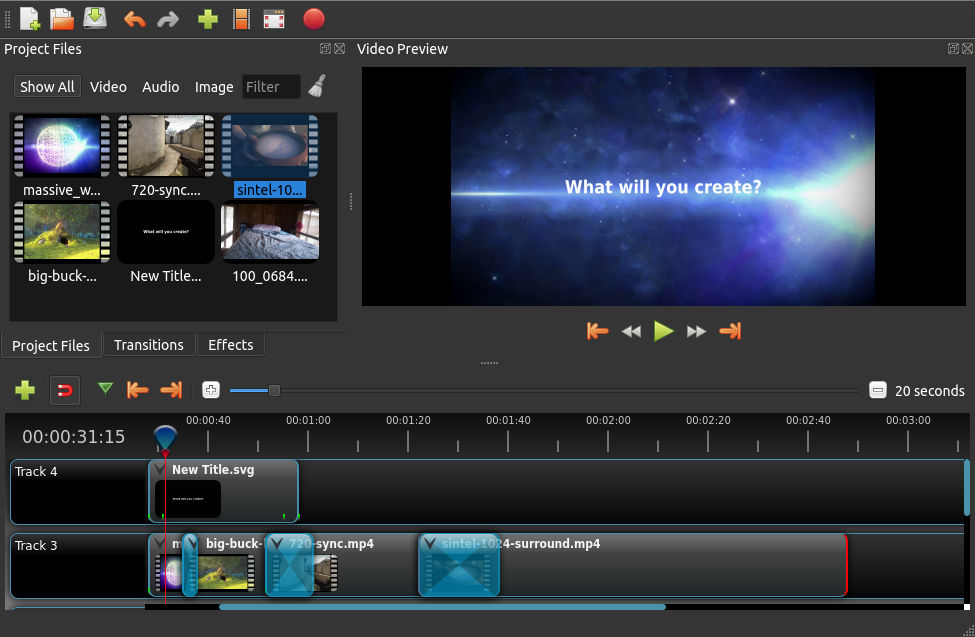
Pros: OpenShot is a good option for beginner to intermediate editors because of its simple user interface. While more complicated programs might provide more editing options, OpenShot’s simple design and user-friendly interface make it ideal for straightforward editing.
Its features include clip resizing, scaling, cropping, snapping, and rotation, as well as real-time preview, audio editing, frame stepping, time mapping, and credit scrolling.
Cons: Some users complain that the interface is too basic, that the program can be laggy, and that it crashes too frequently.
Pricing: Free.
Multichannel communications: How to plan and execute a strategy
Biteable
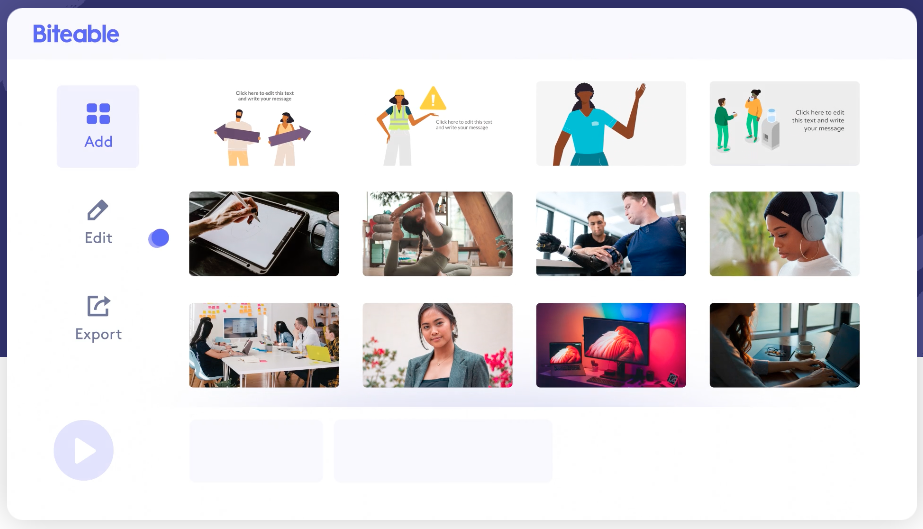
Pros: Biteable promises to help internal communicators create effective videos in three simple steps.
First, it allows you to create and save your own brand styles, which can you select from a drop-down menu and apply in a single click. You can then combine pre-loaded visual elements that have been customized with your branding to create animated scenes, a bit like a more engaging version of an animated PowerPoint deck.
Of all the solutions featured in this list, this is the only video editing software we’ve come across that specifically addresses internal communicators’ needs, although it’s aimed at various other personas too.
Cons: User ratings of Biteable are largely good, although some reviews have expressed frustration with the product and suggested that it is more useful for communicators creating short explainers or teaser videos rather than lengthy editing projects (e.g., onboarding or training videos).
Pricing: From $49 per month.
Vimeo Create
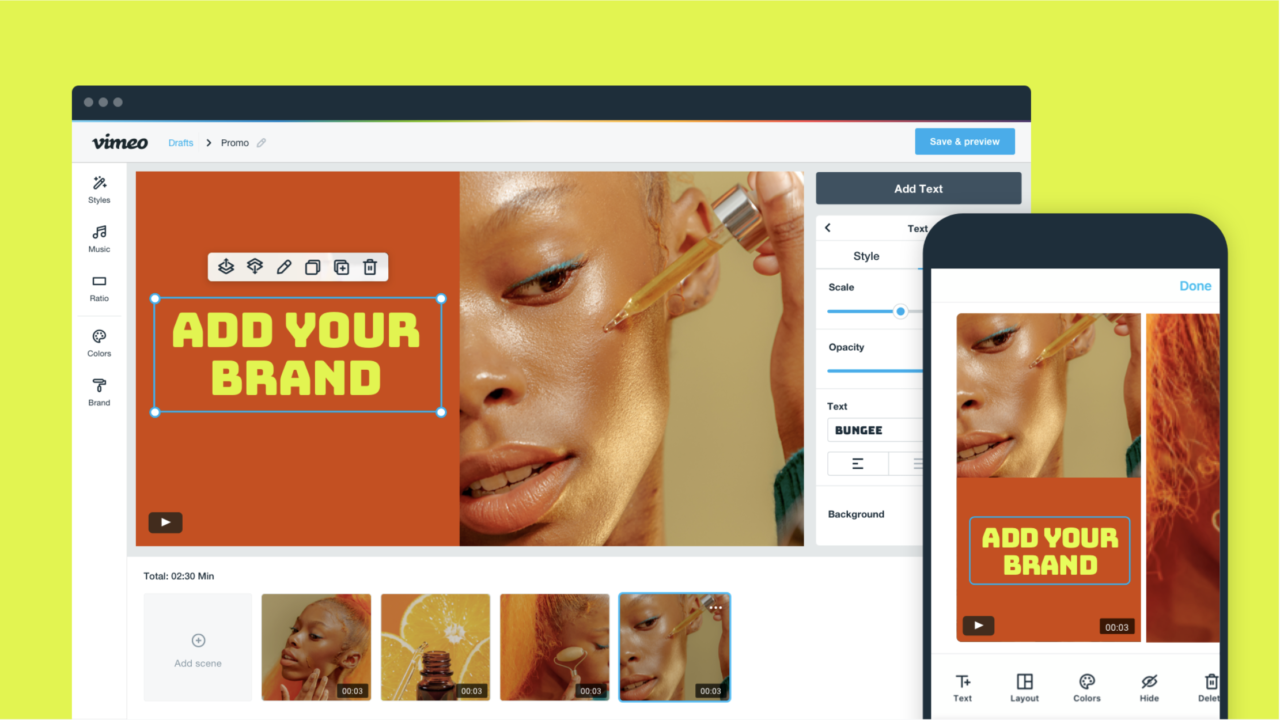
Pros: Vimeo Create is a video editing software tool that is easy to use without any prior video editing experience. Users can simply select custom design templates, but you can also personalize anything to your liking, or just start from the beginning. It even features an AI assistant that suggests color schemes, themes, music, and typefaces to help make your video pop.
This all-in-one video editing solution allows you to manage, host, and distribute all of your videos from one location with Vimeo, making it easy to access and navigate your projects.
Cons: While there are lots of advantages to using a web-based video editor, it can also be challenging for anyone who needs to transfer and work with extremely large, hi-resolution files. As a tool on the beginner to intermediate end of the scale, some users also find its features basic and more useful for short social teasers or product videos.
Pricing: A range of plans from Starter to Enterprise exist, with the most basic being around $10 per seat per month.
iMovie
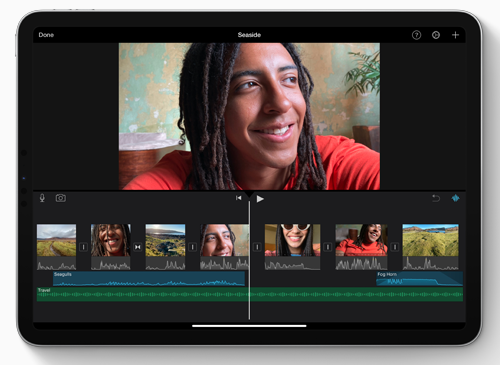
Pros: Good old iMovie is the default editing software that comes included with any Apple hardware. It is known to be relatively straightforward to use, offering a simplistic drag-and-drop interface to transfer files from your storage/iCloud to your workstation.
The fact that iMovie files are saved in your iCloud allows you to work on your movie on any of your Apple products which is a major benefit. Additionally, iMovie is regularly updated, so you can anticipate fresh features and enhancements which will make the editing process simpler, sharper, and much more accessible.
Cons: Easy connections with Apple products but obviously a much more difficult fit for anyone outside of that ecosystem. Users above beginner level also complain that iMovie is a product that you may quickly outgrow.
Pricing: Free with Apple hardware.
HitFilm Express
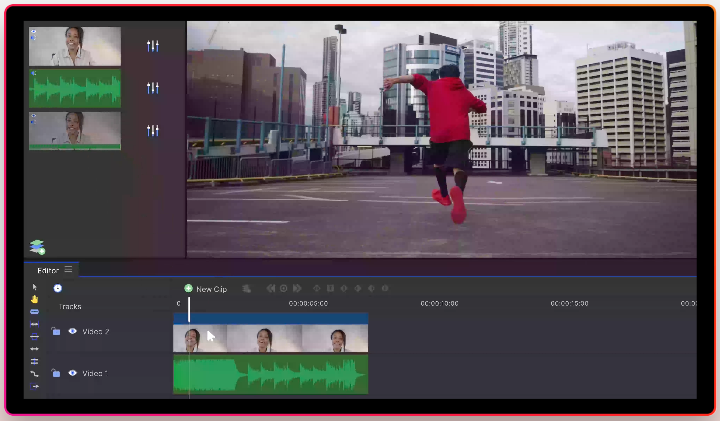
Pros: With bold claims that it’s used to make Hollywood movies, HitFilm may seem a little intimidating if you’re just getting started in the realm of editing, yet a free subscription option makes it a tempting proposition for video editors at any skill level.
To save time when editing, HitFilm has animation capabilities that enable you to make and edit audio and video transitions without needing to make composite shots. Additionally, HitFilm also provides engaging 3D effects for movies, music videos, and even YouTube videos, along with capabilities you’d find in a more expensive video editing software such as 4K footage editing, 360-degree editing, and a wide variety of visual and special effects.
The sole prerequisite for using this free video editing software is that HitFilm will request that you post a social media status update when you first download and install it.
Cons: A plethora of editing options make for a steeper learning curve than most of the other software mentioned here. It will also require computers with higher specs to run well.
Pricing: There is a free basic option with limited access to audio and templates. More advanced subscriptions begin from between $7-10 per user per month.
Multichannel communications: How to plan and execute a strategy
Lightworks
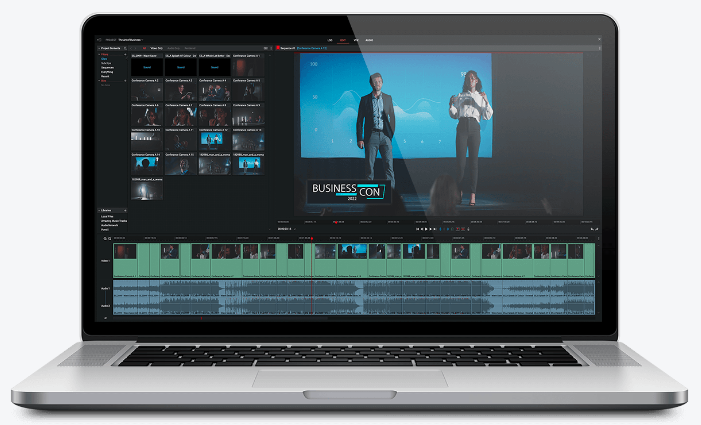
Pros: Lightworks has an easy-to-use interface that makes it straightforward to learn. It is one of the more simple-to-master video editing software solutions thanks to a comprehensive selection of video tutorials.
Lightworks also features a library of unique stock movies and audio clips that are authorized for use in any videos you edit using the platform, enabling you to give any internal communications video a professional appearance.
Cons: A consistently mentioned drawback of Lightworks (in the free iteration) is that the resolution size for exporting videos is relatively low. This may make it less suitable for internal communications videos that require hi-res performance.
Pricing: While Lightworks does have a free version, upgrading to the Pro version will cost from $23.99 per month.
DaVinci Resolve

Pros: Integrating quality 8K editing, color correction, visual effects, and audio post-production in a single production tool, DaVinci Resolve is said to be another popular choice with professional video editors working in movies and television. It’s highly likely those users gravitate towards the paid version of the software, but the free version is packed with enough features for engaging internal communications videos.
DaVinci’s high-performance playback engine speeds up editing and trimming, and also supports both online and offline editing, so if you’re ever inconvenienced by poor connectivity or want to edit on the move, this could be the video editing software for you.
Cons: A very steep learning curve for novices make this a more difficult choice if you’re just starting out. YouTube tutorials may be a solution, but at least one user has complained that even the tutorials need tutorials.
Pricing: Free for DaVinci Resolve 18, or there is a paid option for DaVinci Resolve Studio, which features additional FX and advanced settings.
VideoPad

Pros: Anyone who wants to edit high-quality videos should consider using VideoPad. With VideoPad, you can experiment with various video compositions and styles thanks to a variety of user-friendly features, including 3D video editing and a sound effects library.
As well as taking advantage of color correction and sound effects, you can edit internal communications videos with special effects, overlays, texts, and transitions. The only downside is that experienced video editors could find it too basic. It lacks some of the more sophisticated features included in some of the other free video editing software on this list. However, the ability to add light effects, adjust colors, and overlay text and images make VideoPad well worth considering.
Cons: Some users dislike the audio editing feature included within VideoPad — finding it confusing and hard to use.
Pricing: There is a free trial download of the Home version, but if you plan to use VideoPad for commercial settings then the normal price is $129 for VideoPad Master’s Edition.
Microsoft Video Editor
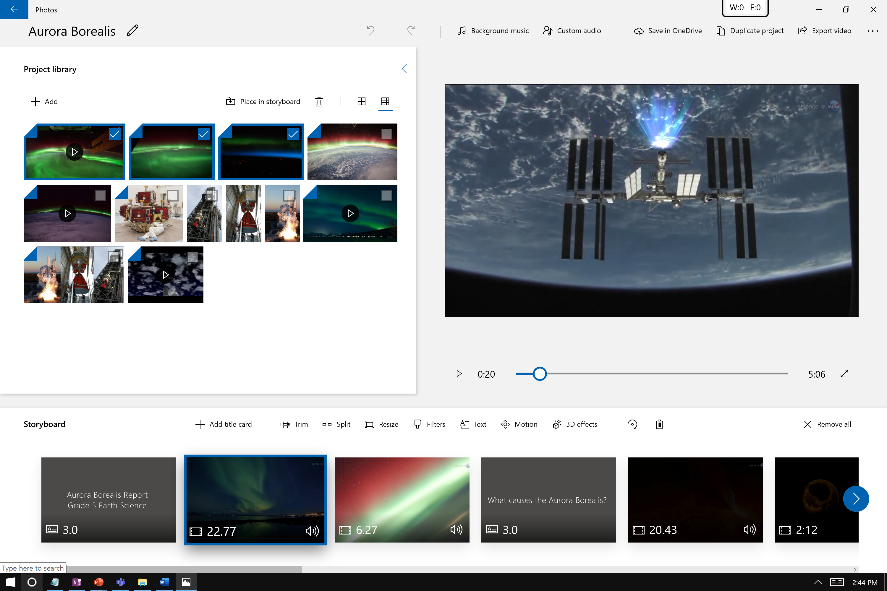
Pros: Microsoft Video Editor is an easy option that is included with Windows 10 and later. It’s ideal for quickly editing shorter videos and offers essential editing capabilities such as cropping, cutting, and adding text or music. Microsoft Video Editor is more of a photo editor with simple video editing thrown in, but it could be exactly what you need if you’re looking for a no-frills option that is easy to master.
Cons: It is a limited system and we couldn’t find a way to edit transitions between images or videos. It’s certainly for beginners and doesn’t rival the video editors mentioned here, although it does offer an easy way in if you want a connected picture editor with added music and some effects.
Pricing: Free with your Microsoft license. There is also now an updated video editor within Microsoft called Clipchamp. Pro-level subscription for Clipchamp is around $10 per month.
VSDC Free Video Editor
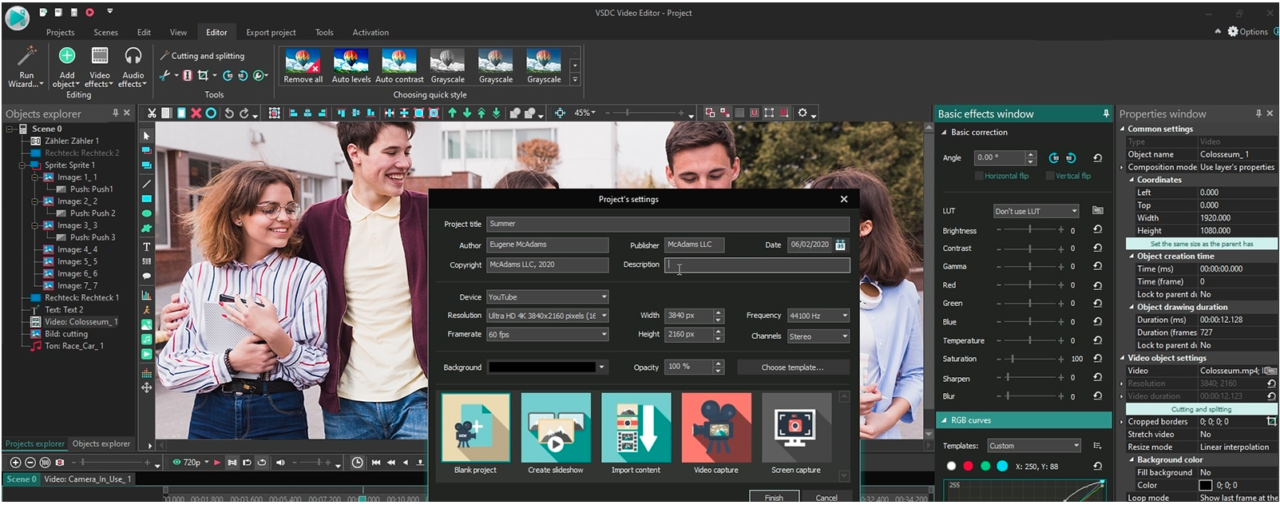
Pros: We’ve not heard of many internal communicators using a green-screen to superimpose backgrounds into their videos, but if you’re interested in pushing the limits of visual effects in internal communications videos then VSDC could be the option for you.
The VSDC toolkit also features video stabilization, powerful post-production effects, slideshow/presentation creation capabilities, and even 3D diagram templates. If you’re looking to get extra creative with your comms, you could have a lot of fun with this one.
Cons: The user reviews for VSDC are, on the whole, good. If there are quibbles from users then they tend to center the UI looking a little dated and it being difficult to preview and edit videos at the same time.
Pricing: The basic package is free, with an option to upgrade to a paid pro version also available.
Multichannel communications: How to plan and execute a strategy
KineMaster
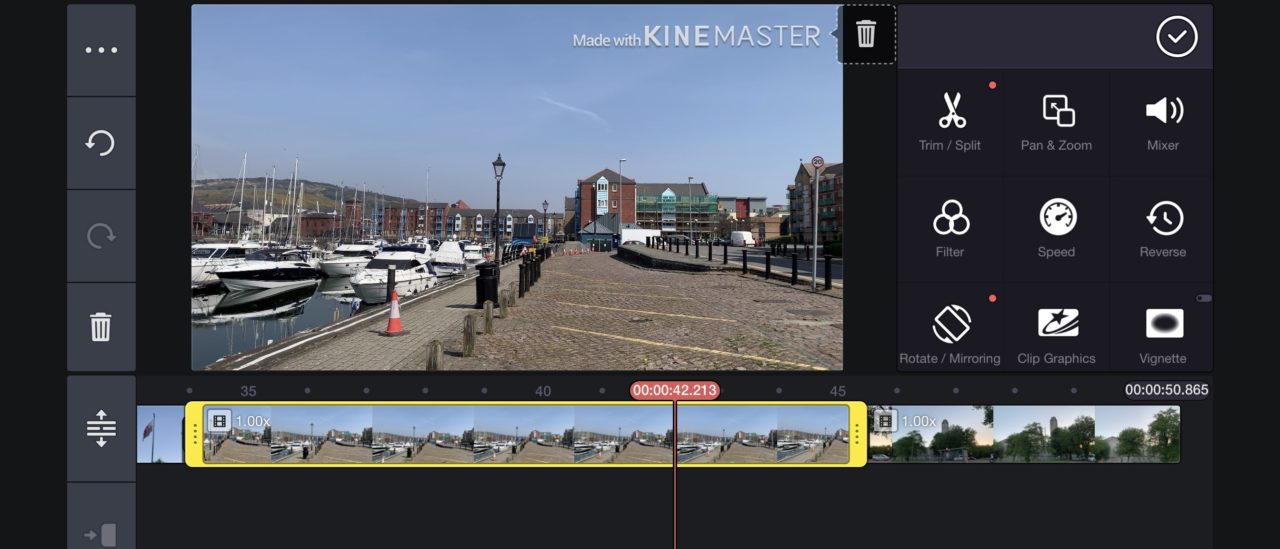
Pros: If you’re an iOS or Android mobile video editor, KineMaster could be your go-to program. This free video editing app is ideal for mobile devices, though there is an optional subscription model. KineMaster makes recording videos, editing them, and uploading them all from your phone or tablet a simple process and features 2,500+ downloadable transitions and effects, so you can quickly clip, splice, trim, and combine videos to your heart’s content. You can also correct and improve videos using color filters and enhancements to make them stand out or look a certain way.
Cons: There is a watermark within the free version. This may be off-putting for some communicators, but not a consideration for others. Some users also complain that due to the nature of large files being in use on a mobile device it can be slow.
Pricing: There is a free version with a watermark. Upgrading to the premium account may cost you around $5 a month.
Shotcut
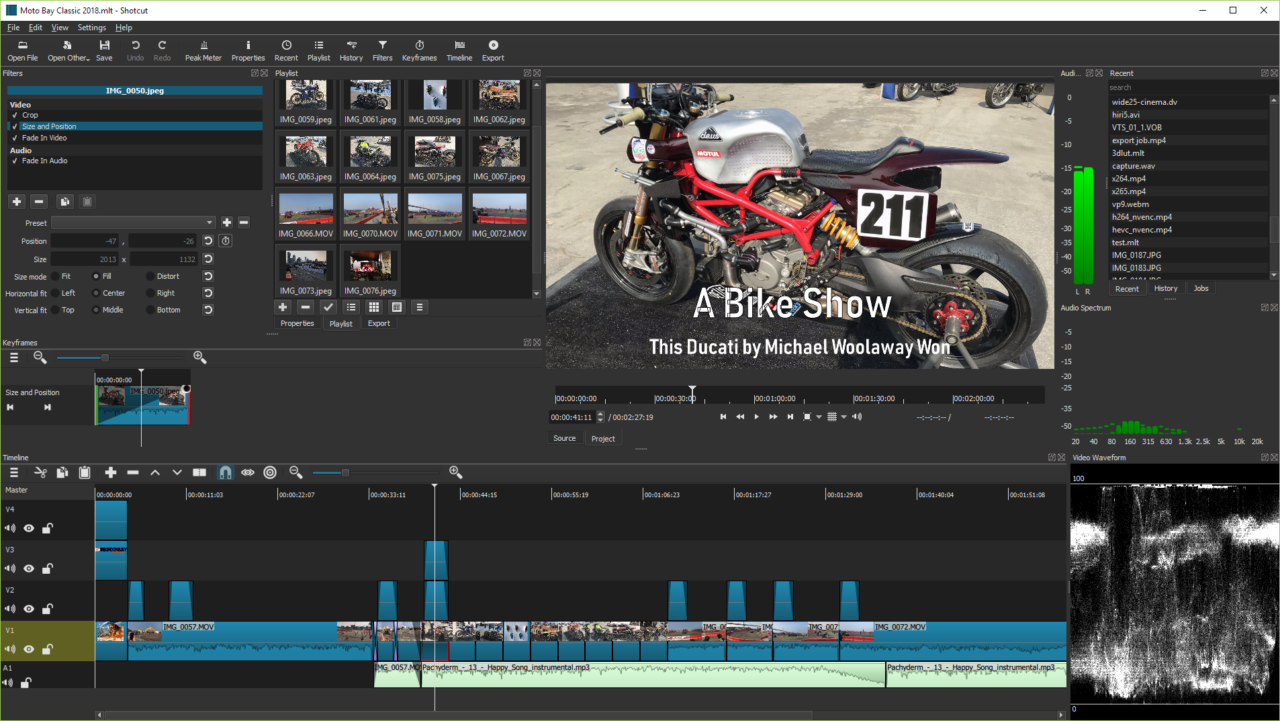
Pros: Looking for an open-source, cross-platform video editor with a large library of instructional videos? Look no further than Shotcut. Some users might find the interface a little odd but it’s still a top-notch editor in spite of this.
Shotcut places a lot of focus on sound editing as well as visuals, so it’s perfect for tweaking audio if that’s important to you. Users can tweak the bass and treble, create bandpass filters, change gain, apply dynamic compression, and many other audio parameters with its wealth of fine-tuning tools. It’s kind of like an audio editor but with a ton of great video editing features as well.
Cons: As with many open-source apps, users have noted that the Shotcut can be a little idiosyncratic. Perhaps lacking the polish of some of the high-end (expensive) editors, Shotcut may require you to spend some time learning its nuances before you become a pro.
Pricing: Free.
The democratization of internal communications videos
While video editing is a growing proficiency for communicators, it can also be beneficial to encourage others across our organizations to tell stories internally that will resonate and inspire through this medium.
This is why it’s so important that the video tools we introduce should be simple and intuitive, so we can empower those with stories to tell to create their own engaging internal communications videos. The same goes for sharing those videos – that should be a simple but effective process, and it can be eased with the right intranet software that allows communicators to embed videos from a range of sources including YouTube and Vimeo, and share them through multiple channels while providing granular engagement analytics.
So what are you waiting for? With plenty of free video software options to send your internal communications videos to the next level, it’s time to stop reading and start filming. Happy editing everyone!






